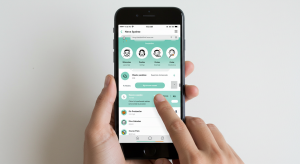Cloud platform as a service refers to the delivery of a computing platform solution as a service. Synonymous with PaaS (platform as a service), cloud platform as a service delivery provides a complete framework that facilitates the development, deployment, and management of on-demand software, which is also known as SaaS (software as a service) or applications as a service. Some PaaS solutions provide an open platform that allows the use of any programming language, database, operating system or server.
Cloud Platform as a Service (PAAS) Types
There are essentially two types of PaaS solutions: application delivery-only PaaS solutions and complete PaaS solutions. The former only delivers the bare-bones functionality that is needed to host applications in the cloud. Facilities for developing, debugging or testing SaaS solutions are not available with this type of PaaS solution. The latter, provides a robust computing platform with a full solution stack that enables the efficient management and delivery of on-demand software.
Complete PaaS solutions provide a platform for SaaS Development, SaaS Deployment and SaaS Testing, in support of the full application life cycle. A complete PaaS solution may also offer the following capabilities: team collaboration tools, security management tools, database integration tools, application version management and more. On a detailed level, a complete PaaS solution includes the following features: user on-boarding or provisioning, subscription management, billing & metering, payment processing, reporting & analytics and more. Apprenda’s Private PaaS offering is an example of a complete PaaS solution that delivers a full set of features that fully support the operational requirements of SaaS solution providers or ISV’s (independent software vendors).
Cloud Platform as a Service (PAAS) Key Characteristics
There are several key traits that PaaS solutions have in common with one another, that go beyond the ability to host, develop, deploy, test or maintain on-demand software solutions. These characteristics are related to PaaS architecture. One of these traits is multi-tenant architecture, which is a characteristic of PaaS design that facilitates the concurrent use of the same cloud computing resource by multiple users. Multi-tenancy is a primary factor in the cost-efficient delivery cloud computing services. Another key PaaS design trait is the inclusion of SOAP (Simple Object Access Protocol) interfaces, REST (Representational State Transfer) interfaces or Web API’s, which allow PaaS to support the delivery of a conglomeration of services, also sometimes referred to as “mash-ups". The inclusion of these interfaces also facilitates component reuse and data integration from various applications, which provide further efficiency and cost savings opportunities for organizations that utilize PaaS solutions in the cloud.
This page is an archive. To learn more about archive pages click here
The responses below are not provided, commissioned, reviewed, approved, or otherwise endorsed by any financial entity or advertiser. It is not the advertiser’s responsibility to ensure all posts and/or questions are answered.


